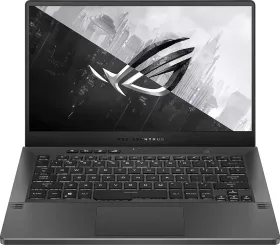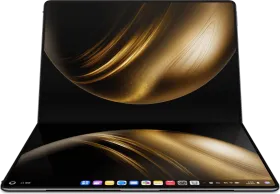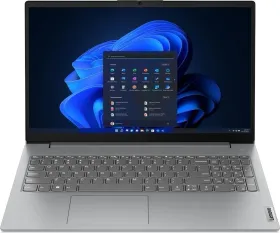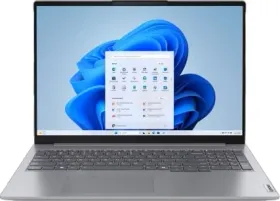If you’re buying a new car, there are a few things that you should check before accepting the delivery. These things, when combined, form the core experience of a car. Hence, it is better to be cautious than to look for solutions afterward. We’ve talked about a pre-delivery inspection and the seven key things that you should check before finalizing the deal with a showroom.
1. Check The Exteriors Of The Car

A new car has to travel a long way from the factory it is put together in, to the stockyard in a city that could be hundreds (or even thousands) of kilometers away. During the process, the car has to withstand the harshest weather conditions during transit or while standing in open stockyards.
Hence, the car might undergo some external wear and tear, possibly some scratches (especially in the front and rear bumpers), differences in color, or other minor deformations. Usually, dealers wash and polish a car before delivering it to the customer, which can altogether remove the signs of wear and tear.
We recommend inspecting a car’s exterior when it arrives at the showroom before it goes in for the touch-up services. Ask the dealership to call you for an inspection when the vehicle arrives (and before it is registered in your name). Park it in an open area and check for any scratches, color differences, or deformations under direct sunlight.
Check your car from all the sides. While it is difficult to identify minor scratches on a white-colored vehicle, they are more imminent on darker shades, such as black, gray, or dark blue. And if you pick up anything on the car’s exterior, point it out to the dealership and ask for possible solutions.
Also Read: Here’s Everything to know about the Bharat Mobility Global Expo 2025: Participating Brands Confirmed
2. Check The Tires For Any Signs Of Damage

While you’re examining your car’s exterior, check the tires. Ideally, brand-new tires should have visibly distinguishable treads. Further, the tread pattern should be the same on all four tires. If the vehicle has alloy wheels, check for any scratches or dents on the alloys.
While stains could go away with a wash, a severe dent or scratch on the alloy could be a sign of impact.
Pro tip: You can use the DOT code on the tire to get an idea of the tire’s production date. This is an important metric, especially since older tires could become brittle. Further, it is highly likely that the tires are produced around the same time as the vehicle (there might be exceptions to this as well, based on the manufacturer’s inventory procurement timeline). All you’ve to look for is the four digital numeric code on the sidewall of the tire.
While the code’s first two digits signify the tires’ production week, the last two point toward the year. For instance, if the code reads “5024,” the tires were made in the 50th week of 2024 (which is in December).
Also Read: Kia Syros vs. Siblings: Where Does The New Vehicle Stand Against Sonet And Seltos?
3. Check The Interiors Of The Car

Once you’ve checked the exterior of the car, it’s time to get inside. This could take time, especially since you’ll have to sit on all the seats and check for the immediate interior elements. For instance, sitting in the driver seat will help you check the steering wheel, the window controls on the door, all the dashboard controls (including the infotainment screen, instrument cluster, AC vents, etc.), and the accelerator/brake pedals.
Similarly, sitting in the other seats will give you an idea of all the interior elements of the car, including the roof liner, armrests, seat belts, glove box, parcel tray, door panels, etc. You should be on the lookout for any stains, marks of usage (such as scratches), signs of water damage (including moisture in the floor carpet), and tampered rubber piping on the doors.
If there are any cracks on the mirrors (whether it is the windshield or the side windows), click pictures of the spot and inform the dealership about it. If the car has the manufacturing year on the seatbelt or window pane, match it with the chassis number to confirm the manufacture time.
Also Read: Hot SUV Launches Of 2025: Kia Syros, MG Gloster, Creta EV, Tata Sierra, And More
4. Check The Odometer Reading

While it is natural for a car to undergo exterior damage during shipping, a car, in an ideal situation, shouldn’t be driven more than 50 to 100 kilometers. If the instrument cluster shows a higher reading, take this up with the dealership and ask specific questions about where the car has been and where the nearest stockyard (where the vehicle was first unloaded).
While this isn’t a common practice, we’ve heard cases about dealers using new cars as test-drive vehicles (in rare cases, though), which increases the kilometer count for the customer who will eventually purchase the car. Hence, it is essential to check the odometer reading before you accept the delivery of a car.
5. Try All The Electrical Components

Be sure to check all the electrical components, like the headlights/taillights, indicators, infotainment system, powered windows, speakers, horns, etc. While the car is parked, check whether the engine starts without many attempts. Once the engine starts, give the RPMs a few minutes to settle.
Connect your smartphone with the car’s infotainment system and see if the Bluetooth connection remains stable. Play some music to check the quality of the speakers. While you’re in the driving seat, check the wipers (front and rear), washers, brake lamps, reverse camera, and fog lights of the car.
Also Read: Tips & Tricks to Maintain Your Electric Vehicle (EV) At Home in India
6. Check The Air Conditioner

In the Indian subcontinent, the air conditioner plays a crucial role in determining a car’s overall experience, especially in May and June, when the temperature exceeds 40 degrees Celsius.
To check the air conditioning system, start the car’s engine, set the temperature to the lowest, and wait a few seconds to see whether the air gets chilled. Once the cabin gets chilled, turn the temperature dial or meter to the maximum and see if the air gets hot.
While changing the temperature, pay attention to the dashboard for any noises. Also, check the airflow between the minimum and the maximum range. Last but not least, put the airflow to all the available configurations, including the windshield vents, upper verts, foot vents, and the combinations.
Also Read: Five Safest Cars (With 5-Star Safety Ratings) Under Rs. 10 Lakhs In India
7. Open The Bonnet And Check All The Components

Once you’ve completed all the checks on the exterior and the interior of the car, it’s time to open the bonnet, as that’s where the heart of the vehicle resides, along with all the other crucial components. The engine bay is home to several critical parts, including the engine itself, coolant, brake fluid, battery, and many more.
The first thing that you should check is whether all the wires and components look in place. It’s okay if the components have a thin layer of dust on them, but if there are tiny footprints on the dust, you should ask the dealership to check all the wirings thoroughly.
Lift the engine dipstick and check if the engine oil is at the optimum level, has a clear appearance, and isn’t excessively dark. The coolant and the brake level should also be in the recommended range. The battery is generally to the right in the engine bay; check both terminals for any signs of rust or corrosion.
Last but not least, look for any leaks or unusual noises after starting the engine. The purpose here is to ensure that all the components are in the right place and the right condition.
Also Read: ADAS Explained: The tech behind this popular safety and convenience feature
You can follow Smartprix on Twitter, Facebook, Instagram, and Google News. Visit smartprix.com for the latest tech and auto news, reviews, and guides.


































